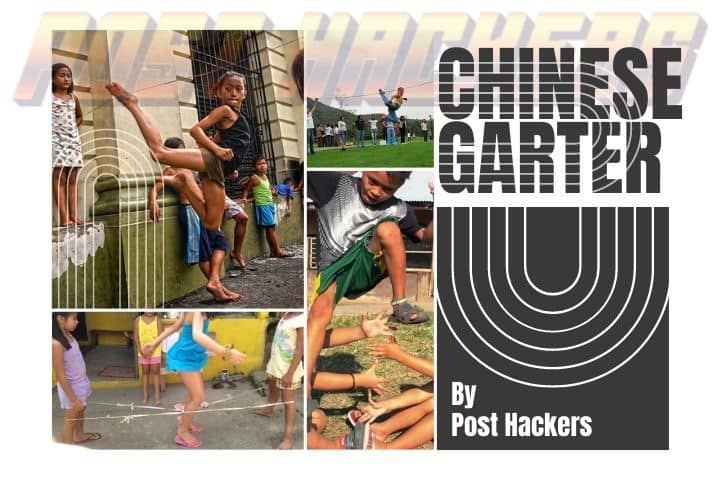What is Penitensya?
Penitencia is a Filipino custom of self-mortification that takes place throughout Holy Week. It is a means for devotees to demonstrate their faith and beg forgiveness for their faults. Penitentes, as they are known, may go barefoot, carry large crosses, or lash themselves with bamboo rods. Some even go so far as to have themselves nailed to crosses.
History of Penitensya

Penitensya is a custom that is thought to have come from Spain and was introduced to the Philippines by Spanish missionaries during the country’s colonial era. Self-mortification, however, probably predated the advent of the Spaniards in the Philippines by some time.
Types of Penitensya
Penitensya can have many various forms, however a few of the more popular ones are as follows:
- Pahiyas: This is a tradition in the town of Lucban, Quezon, where houses are decorated with colorful rice stalks and flowers. The penitentes in Lucban walk barefoot and carry bamboo crosses.
- Moriones: This is a tradition in the town of Marinduque, where penitentes dress up as Roman soldiers and flagellate themselves with bamboo sticks.
- Via Crucis: This is a procession that follows the route that Jesus Christ took to his crucifixion. Penitentes in the Via Crucis may walk barefoot, carry crosses, or whip themselves.
Some more unique information about penitensya:
The practice of penitensya is often seen as a way to connect with the suffering of Jesus Christ. Penitentes believe that by experiencing physical pain, they can better understand the pain that Jesus experienced on the cross.
The tradition of penitensya is often accompanied by prayers and hymns. Penitentes pray for forgiveness of their sins and for the well-being of their families and communities.
Penitensya is often a public act. Penitentes may walk barefoot through the streets or carry crosses in processions. This public display of their faith is seen as a way to witness to their beliefs and to encourage others to follow in their footsteps.
The tradition of penitensya is not without its critics. Some people believe that the practice is too dangerous and that it should be discontinued. Others believe that the practice is a form of self-harm and that it is not a healthy way to express one’s faith.
Despite the criticism, the tradition of penitensya continues to be practiced in the Philippines today. It is a powerful reminder of the importance of faith and the power of sacrifice.
Additional facts about penitensya:
The most common time for penitensya is during Holy Week, but it can also be practiced at other times of the year.
Penitentes are typically men, but women also participate in the tradition.
The age of penitentes varies, but it is most common for people between the ages of 18 and 50 to participate.
Penitensya is not a requirement of the Catholic Church, but it is a popular way for Filipino Catholics to express their faith.
Why do people do Penitensya?

People do penitensya for a variety of reasons. Some do it as a way to express their faith and seek repentance for their sins. Others do it as a way to atone for the sins of their family or community. Still others do it as a way to challenge themselves physically and spiritually.
The Risks of Penitensya
Penitencia can be a dangerous practice. Penitentes risk injury from carrying heavy crosses, whipping themselves, or walking barefoot. In some cases, penitentes have even died during the practice.
The Future of Penitensya

The tradition of penitensya is still practiced in the Philippines today, but it is becoming less common. Some people believe that the practice is too dangerous and should be discontinued. Others believe that it is a valuable part of Filipino culture and should be preserved.
Conclusion
Penitencia is a controversial tradition, but it is an important part of Filipino culture. It is a way for devotees to express their faith and seek repentance for their sins. While the practice can be dangerous, it is also a challenge that many people are willing to undertake.
Call to Action
If you are interested in learning more about penitensya, there are many resources available online and in libraries. You can also visit the Philippines during Holy Week to see the tradition firsthand.
Disclaimer: The information in this blog post is for informational purposes only and should not be considered medical advice. If you are considering participating in the penitensya tradition, please consult with your doctor first to make sure that it is safe for you. The tradition of penitensya is a dangerous practice and should not be undertaken lightly. There is a risk of injury or even death associated with the practice, and it is important to be aware of the risks before participating.
FAQs about Penitensya:
What is the purpose of penitensya?
Penitensya is a Filipino tradition of self-mortification performed during Holy Week. It is a way for devotees to express their faith and seek repentance for their sins. Penitentes, as they are called, may walk barefoot, carry heavy crosses, or whip themselves with bamboo sticks. Some even go as far as getting themselves nailed to crosses.
Where did the tradition of Penance come from?
The tradition of Penance is believed to have originated in Spain and was brought to the Philippines by Spanish missionaries during the colonial period. However, it is likely that the practice of self-mortification existed in the Philippines even before the arrival of the Spaniards.
What are the different types of Penance ?
There are many different types of Penance, but some of the most common include:
- Pahiyas: This is a tradition in the town of Lucban, Quezon, where houses are decorated with colorful rice stalks and flowers. The penitentes in Lucban walk barefoot and carry bamboo crosses.
- Moriones: This is a tradition in the town of Marinduque, where penitentes dress up as Roman soldiers and flagellate themselves with bamboo sticks.
- Via Crucis: This is a procession that follows the route that Jesus Christ took to his crucifixion. Penitentes in the Via Crucis may walk barefoot, carry crosses, or whip themselves.
Why do people do penitensya?
People do Penance for a variety of reasons. Some do it as a way to express their faith and seek repentance for their sins. Others do it as a way to atone for the sins of their family or community. Still others do it as a way to challenge themselves physically and spiritually.
Is penitensya safe?
Penitensya can be a dangerous practice. Penitentes risk injury from carrying heavy crosses, whipping themselves, or walking barefoot. In some cases, penitentes have even died during the practice.
Is penitensya a requirement of the Catholic Church?
No, Penance is not a requirement of the Catholic Church. It is a popular way for Filipino Catholics to express their faith, but it is not mandatory.
What are the risks of participating in penitensya?
The risks of participating in Penance include:
- Injury from carrying heavy crosses, whipping oneself, or walking barefoot
- Infection from open wounds
- Heatstroke or dehydration
- Heart attack or stroke
- Death
How can I participate in penitensya safely?
If you are considering participating in penitensya, it is important to do so safely. Here are some tips:
- Make sure that you are physically fit to participate.
- Wear appropriate clothing and footwear.
- Have a friend or family member accompany you.
- Stop if you feel pain or discomfort.
Where can I learn more about penitensya?
There are many resources available online and in libraries that can teach you more about penitensya. You can also visit the Philippines during Holy Week to see the tradition firsthand.
















